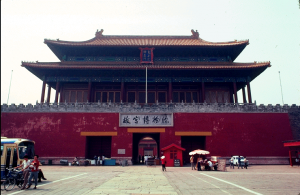
Located in the center of Beijing, the capital of the People’s Republic of China, the Imperial Palace (also called the Imperial City or the Forbidden City) covers some 700,000 square meters. It was built between A.D. 1406 and 1420, and was the residence of the Ming and Qing dynasties. This is one entrance to the Palace Complex, the Gate of Heavenly Peace (T’ien-an Men).
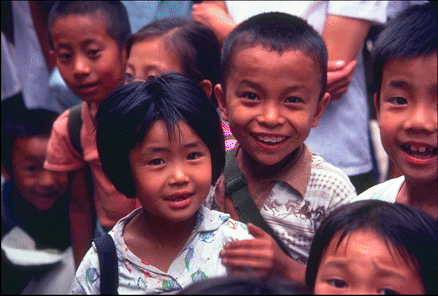
China’s population numbers well over 1 billion, making it the most populous nation on earth. Due to the sheer size of the country and diversity of its people, there is no one “Chinese” language. Many different languages are spoken, including Mandarin, Cantonese, Wu (a Mandarin dialect) and Tai; the Mandarin dialect of Beijing is considered “standard” or “official” Chinese and is the language of the government and education.
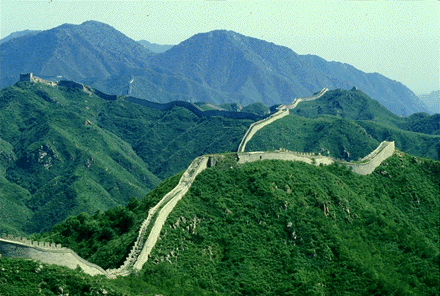
The Great Wall of China, one of the most impressive engineering feats on earth, is the only man-made structure visible from orbit; it stretches for over 4,000 miles (6,400 kilometers) across the Chinese countryside. Construction of a defensive barrier began around the 7th century B.C. , but most of the present wall dates from A.D. 1487-1505 during the reign of Hung-chi, of the Ming dynasty. The wall’s chief purpose was to keep out invading barbarians.
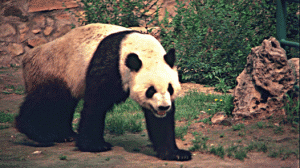
China is home to a tremendous number of animal species; some, like the Yangtze alligator and the giant panda, are found nowhere else. The panda’s diet consists mainly of bamboo, and the destruction of the great Chinese bamboo forests, together with poaching, has led to the endangerment of the species. It is estimated that there only about 1,000 giant pandas left in the wild, and 130 in zoos around the world.
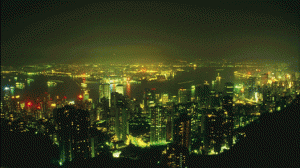
Hong Kong was a sparsely-populated area until the British began using its excellent harbor in the 19th century; since then, the city has become one of the world’s most important centers of shipping, manufacturing and finance with a population of more than 6.5 million. Hong Kong was a British Crown Colony, leased from China until 1997, when it was ceded to the People’s Republic of China.
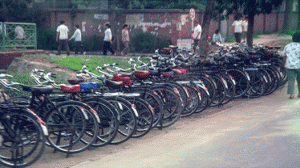
It is estimated that China’s urban population numbers around 500 million: Shanghai has at least 7 million people, Beijing is home to 6 million, and all cities are expanding rapidly. Bicycles are a popular means of transport, enabling city dwellers to navigate through congested urban traffic.
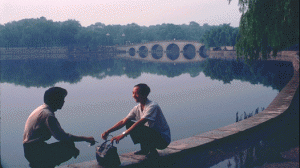
The concept of being Chinese is not based on race. Rather, it is a cultural concept. To speak and behave like a Chinese – in short, to accept the Chinese system of cultural values – is to be Chinese. The Chinese refer to themselves as Han or sons of Han (as in Han Dynasty, a period of great historical significance). Throughout history, small ethnic groups that came into contact with the Han Chinese have adopted Chinese culture and have been absorbed into the mainstream. This process continues, though there are legal guarantees designed to protect the rights and culture of minority nationalities.
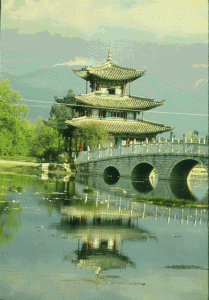
The pagoda is a type of Buddhist monument meant to hold sacred relics. Buddhism came to China from India as early as the first century A.D., and flourished, despite severe persecution in the 9th century. During the Cultural Revolution, all religions were suppressed, although it is estimated more than 68 million Chinese still consider themselves Buddhists.

The Chinese Communist party is the primary political force in China. Unlike parties in Western democracies, it is a tightly organized movement that controls and leads society at all levels. The party sets policy and controls its execution through government officials who are also party members. Theoretically, party membership is open to anyone over 18 who accepts the party program and is willing to work actively in one of its organizations. Members are expected to abide by the party’s discipline and to serve as model workers. Mao Zedong was the leader of the Chinese Communist Party from 1931 until his death in 1976.
